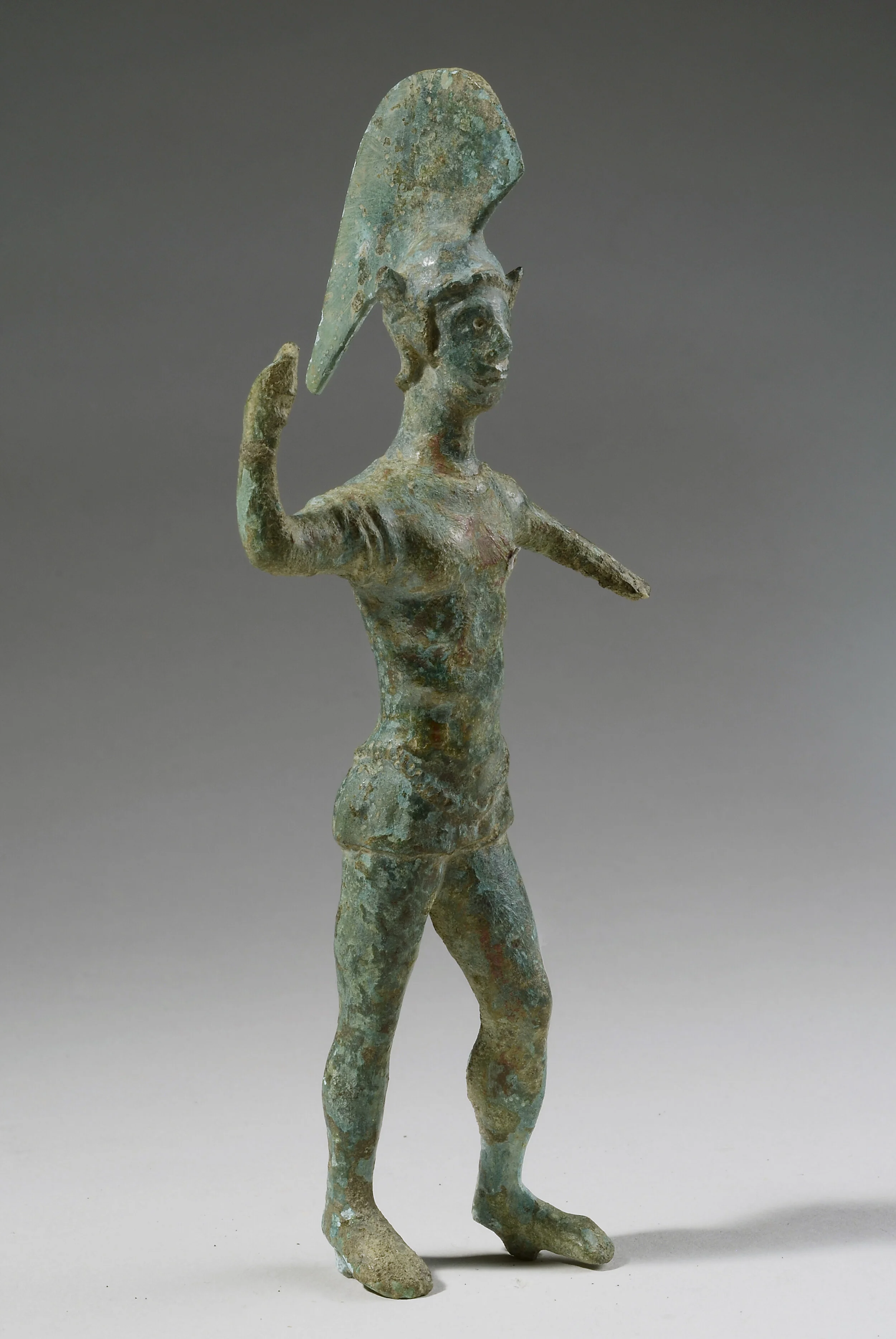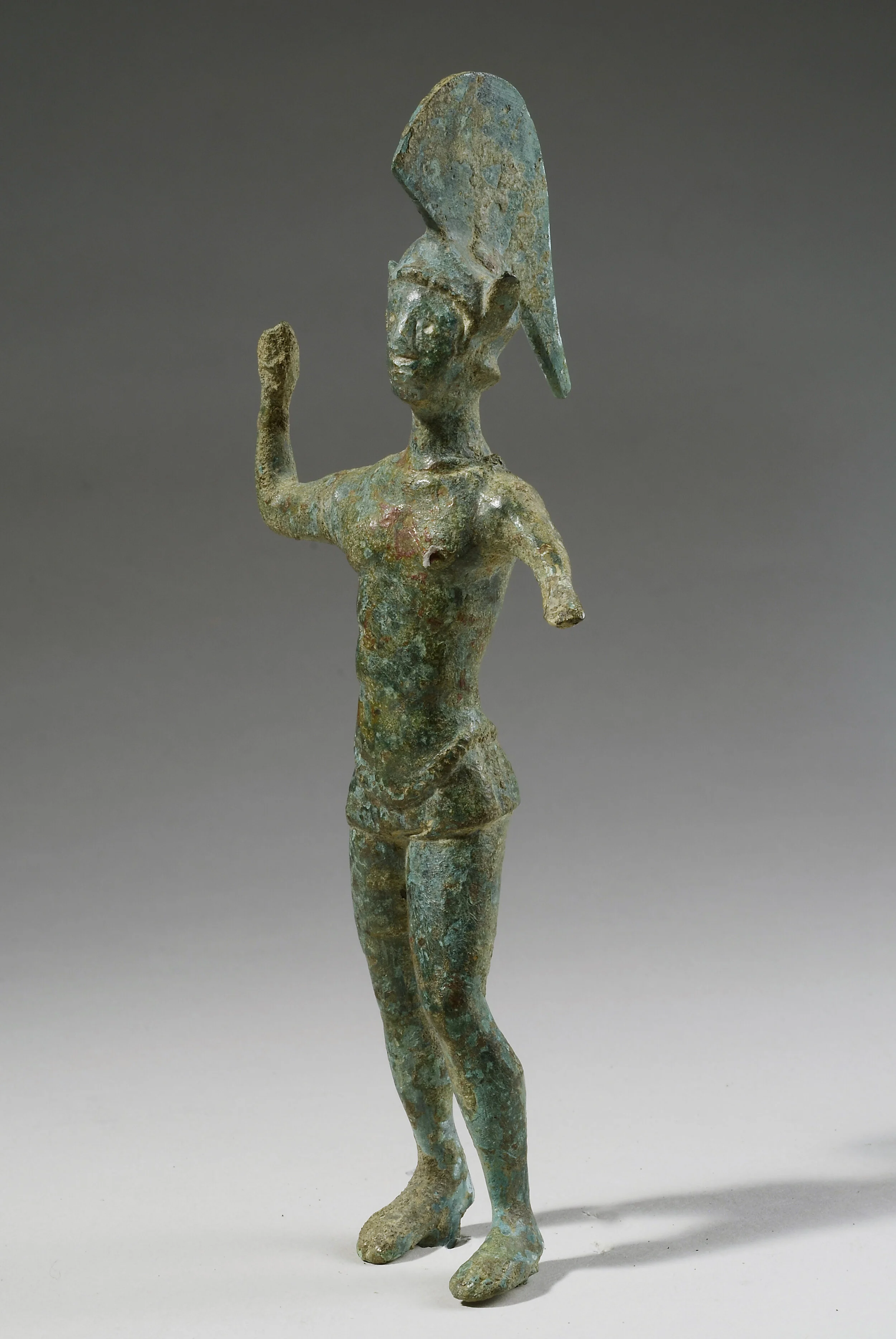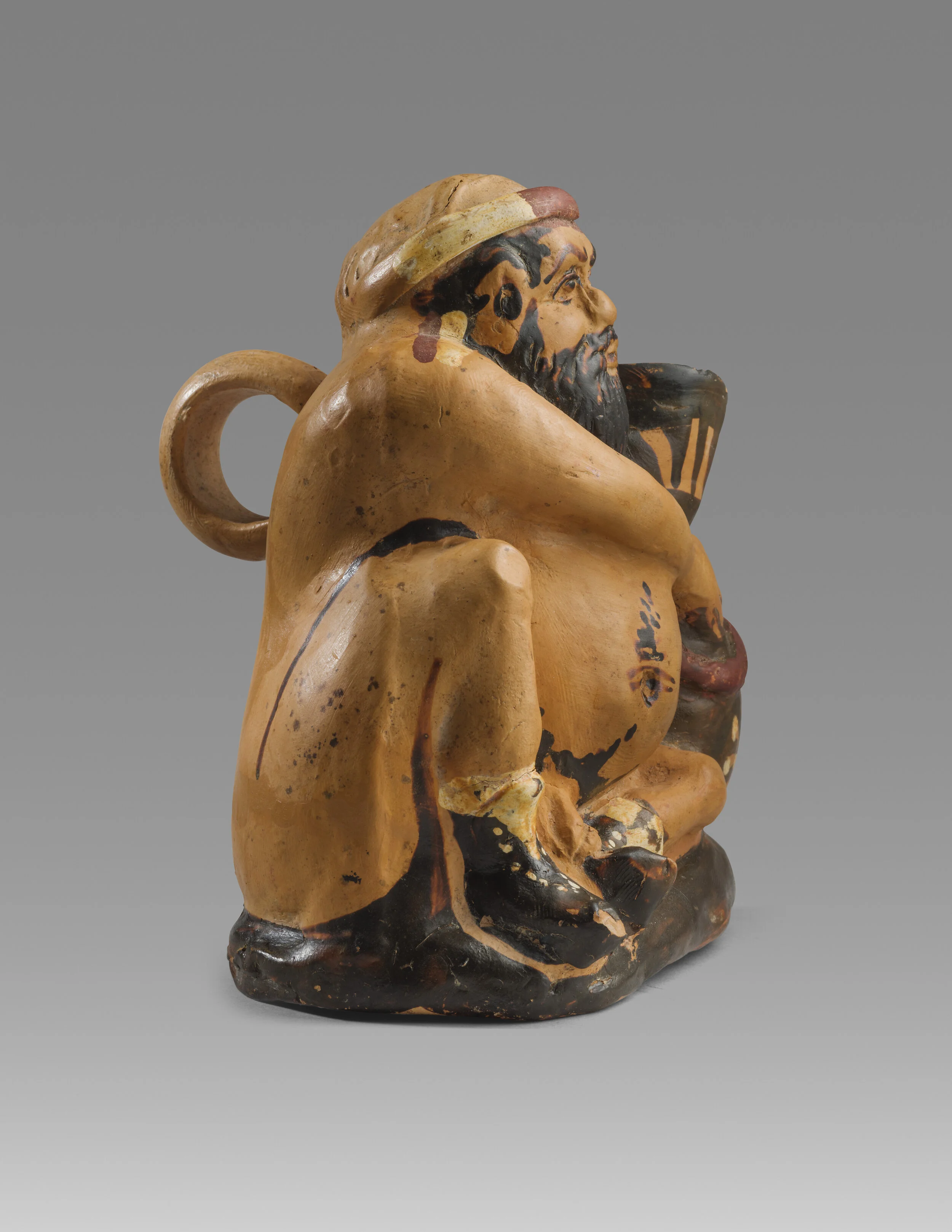Ancient Etruscan Bronze Warrior




Ancient Etruscan Bronze Warrior
Etruscan, 5th Century B.C.
Bronze
H: 16.2 cm (6.38 in)
Serial: 2209
PROVENANCE: Ex- European private collection, 1994
The statuette is solid cast with partially preserved tangs under the feet, which would have served to fasten the bronze to its ancient base. The deep set eyes of the warrior are made by punch marks, and the horizontal line below the nose indicates lips rather than a mustache since the figure is beardless. Unlike the elongated, more common versions of Umbrian warriors, this figure of a warrior is robust and muscular. However it is still outfitted in the usual hoplite armor of these figures, consisting of a high crested Attic helmet with upraised cheek-pieces and a cuirass, protective body armor, which has an edge of a ropelike cord. A short chiton or tunic hangs below the cuirass. The warrior strides forward in attack mode with his left leg and arm placed forward and his right arm raised up. A long spear or javelin would have been gripped in his right hand, and he would have supported a shield on his lowered left arm. Like similar Etruscan and Umbrian bronzes of the fifth and fourth centuries B.C., this figure’s panoply of armor is based on Attic Greek types dating to the early part of the fifth century B.C.
Such statuettes of armed male figures may have been intended to represent Mars, the god of war, if not human warriors. Virtually all the examples of this statuette type are found as ex votos and dedicated as votive statuettes in sanctuaries. Most of them are standard in form and come from Umbria. They exhibit a “mannerist geometric style,” but this figure, while similar in pose, is more representational and classical in form, which adds to its distinctive appearance and interest. This statuette, although of a more modest execution and less well-preserved, has more in common with the magnificently cast and minutely detailed fifth century B.C. bronze statuette of the warrior from Populonia [now in the archaeological museum of Florence, see O. Brendel, Etruscan Art (New Haven 1995), 311-12, fig. 230].
Brendel considers the warrior from Populonia as representative of Classical Etruscan models that launched the warrior type of statuette and set its generic form, prototypes to which this bronze figure of a warrior must owe its inspiration.







